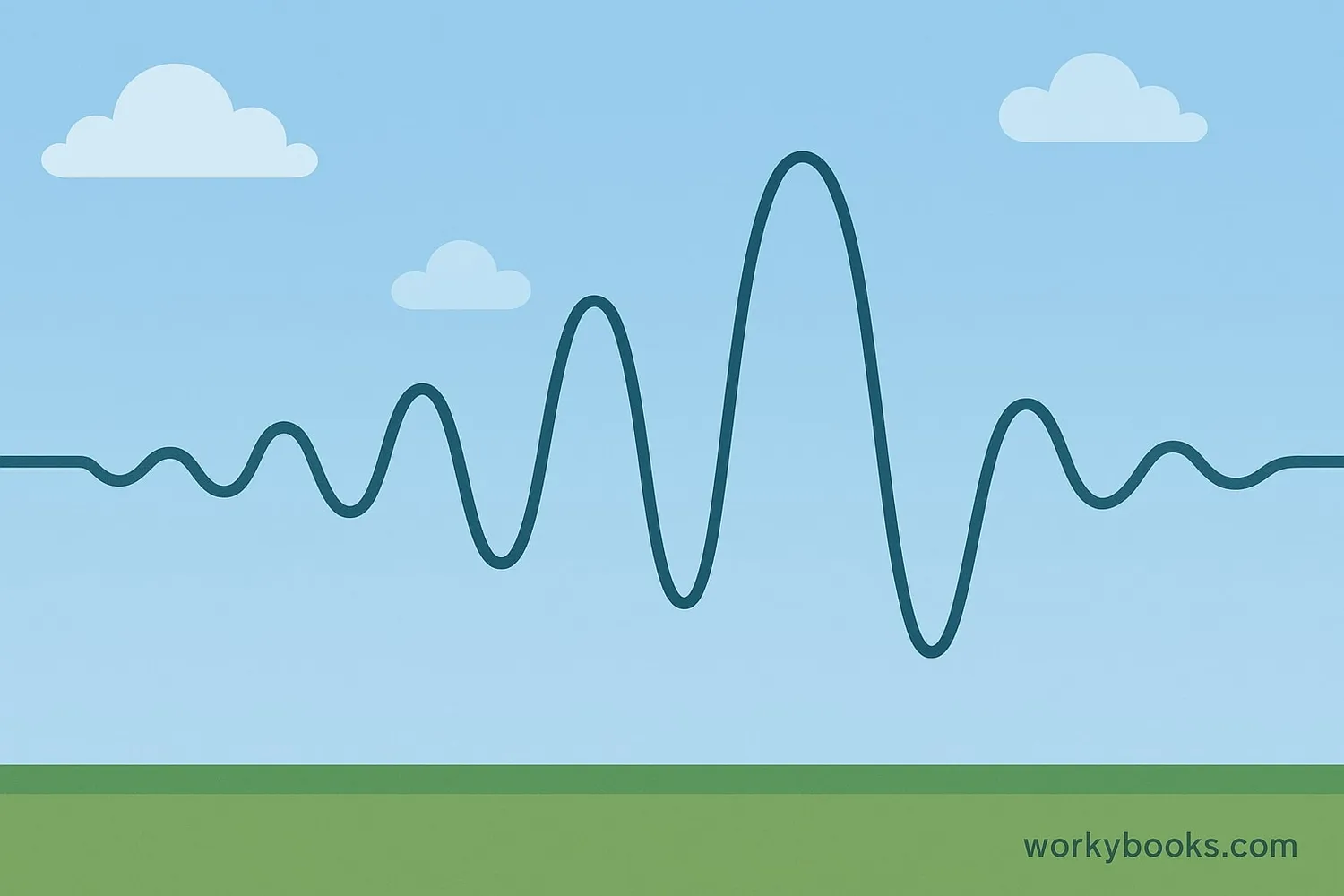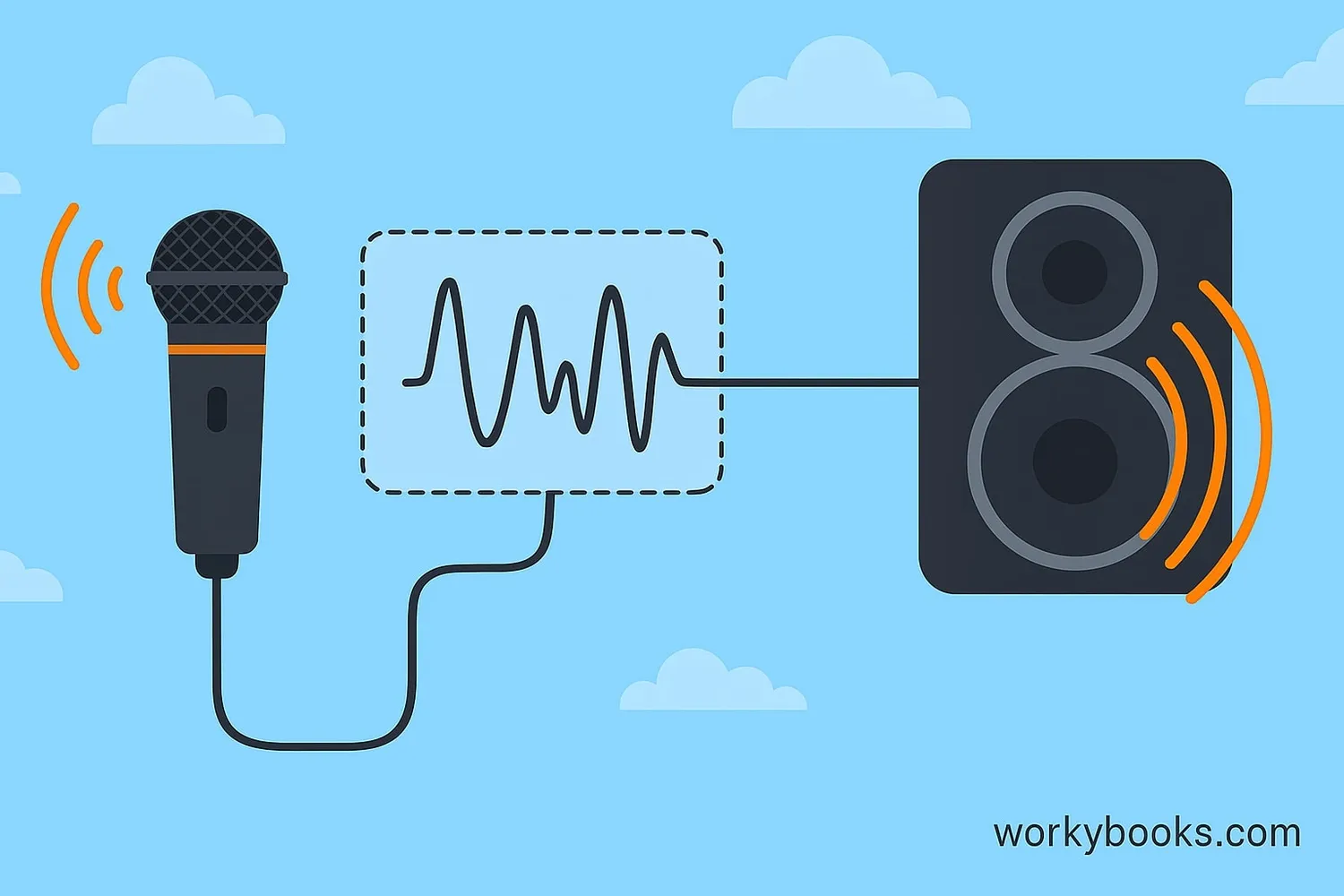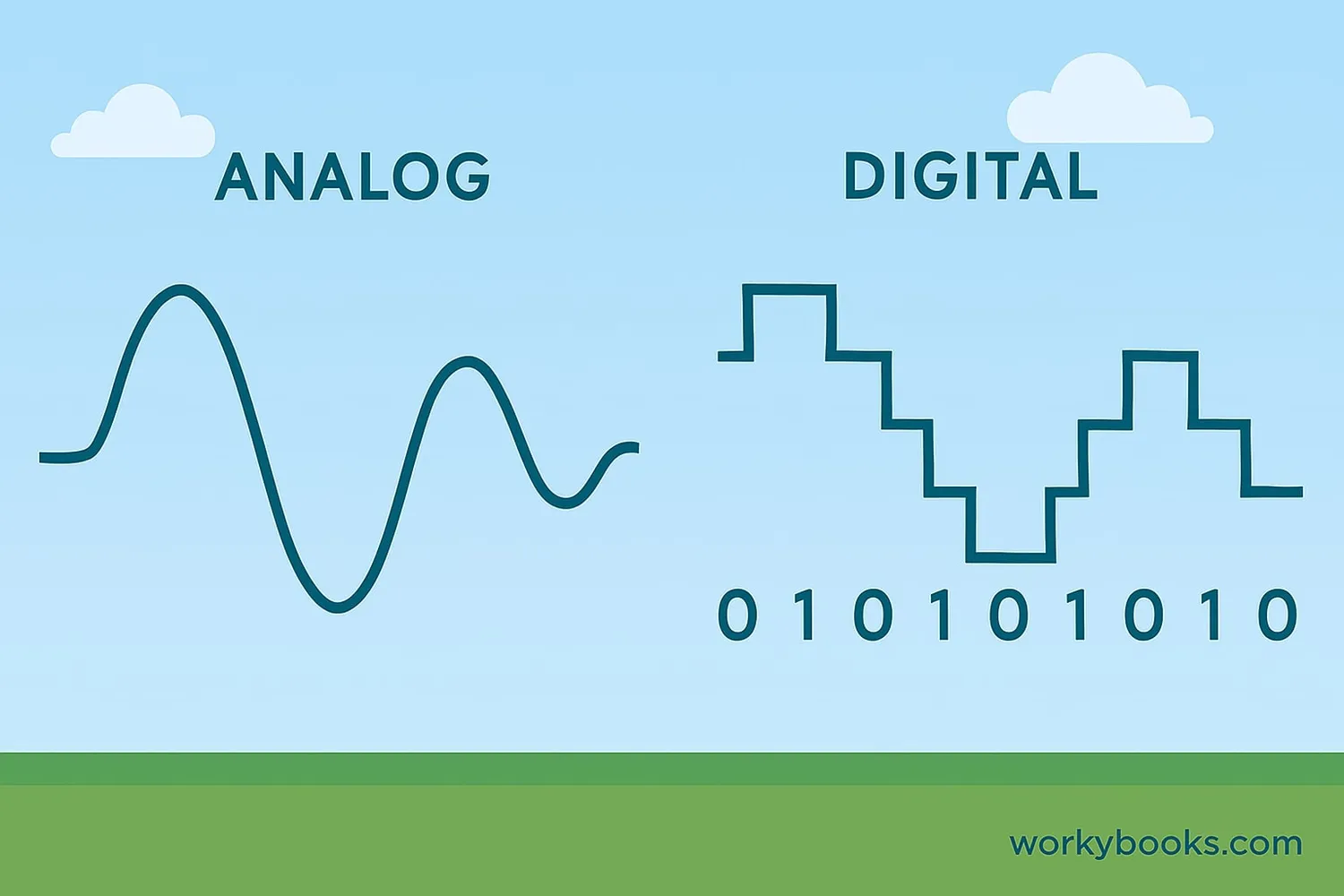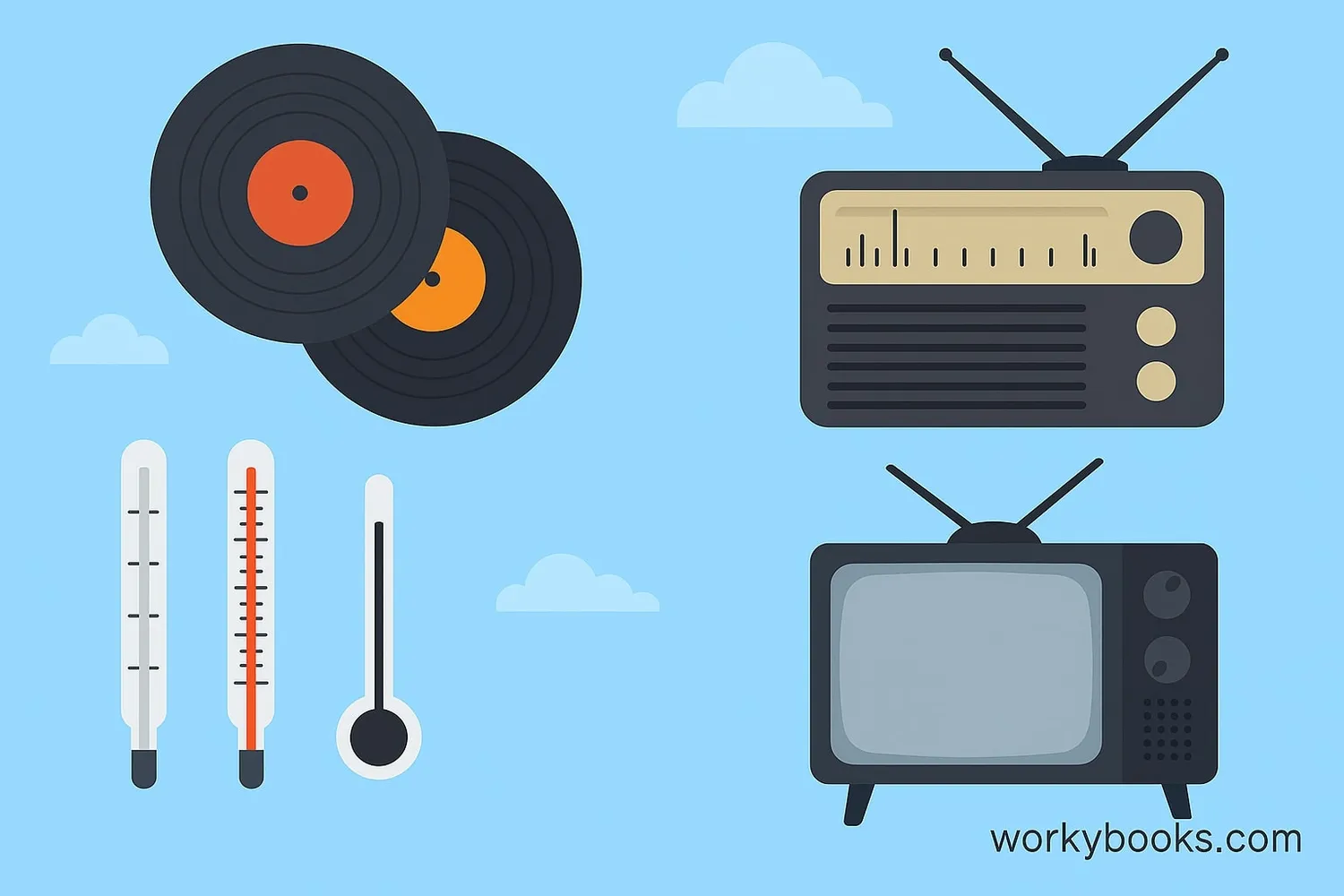Analog Signals - Definition, Examples, Quiz, FAQ, Trivia
Discover how continuous waves carry information in our world!
What is an Analog Signal?

An analog signal is a continuous wave that carries information by changing its properties. Unlike digital signals that use discrete values (like 0s and 1s), analog signals can have any value within a range.
Imagine drawing a wave on paper without lifting your pencil - that's similar to how analog signals work! They smoothly change over time to represent things like sound, light, temperature, or other measurements from the real world.
Continuous
Analog signals have no breaks or steps - they flow smoothly
Wave
They form wave patterns that can be measured
Amplitude
The height of the wave represents signal strength
Frequency
The number of wave cycles per second (measured in Hertz)
Real-World Example
When you speak, your voice creates sound waves that are analog signals. These waves travel through the air to someone's ears, carrying the information of your words.
How Analog Signals Work

Analog signals work by continuously varying properties like voltage, current, or frequency to represent information. Here's how they transmit information:
Transmission
Signals travel through wires, air, or space as electromagnetic waves
Modulation
Changing wave properties (amplitude or frequency) to carry information
Processing
Electronic circuits amplify or modify analog signals
Modulation is how we encode information on analog signals:
• AM (Amplitude Modulation): Changes the height of the wave to carry information (used in AM radio)
• FM (Frequency Modulation): Changes how close together the waves are to carry information (used in FM radio)
Nature's Signals
Our senses naturally understand analog signals! Our ears detect continuous sound waves, and our eyes perceive continuous light waves - both analog signals.
Analog vs. Digital Signals

While analog signals are continuous, digital signals represent information using discrete values (usually 0s and 1s). Both have important roles in technology:
Analog Signals
• Continuous and smooth
• Represent real-world measurements
• Can have infinite values
• Examples: vinyl records, analog clocks
Digital Signals
• Discrete steps
• Represent information as numbers
• Limited possible values
• Examples: CDs, digital watches
Why we still use analog signals:
• Many natural phenomena are analog (sound, light, temperature)
• Some devices are simpler and cheaper to make with analog technology
• Analog signals can represent information with infinite detail
• Some applications (like radio transmission) work better with analog
Applications of Analog Signals

Analog signals are all around us! Even in our digital world, many technologies still use or start with analog signals:
Audio
Vinyl records, analog radios, musical instruments
Video
Old television broadcasts, analog cameras
Communication
Traditional landline telephones, radio transmission
Sensors
Thermometers, light sensors, speedometers
How analog and digital work together:
Many modern devices convert analog signals to digital for processing, then back to analog for output. For example:
1. Your voice (analog) is picked up by a microphone
2. Converted to digital for processing in your phone
3. Converted back to analog for the speaker in the other person's phone
Analog Signal Quiz
Test what you've learned about analog signals with this quiz! Answer all 5 questions to see how much you understand.
Frequently Asked Questions
Here are answers to common questions about analog signals:
Analog Signal Trivia
Discover some fascinating facts about analog signals:
Historical First
The first long-distance analog signal was sent by Samuel Morse in 1844 - the famous "What hath God wrought" telegraph message. This used electrical pulses (an analog signal) to communicate over wires.
Nature's Analog
Your brain communicates using analog signals! Neurons send electrical impulses that vary in strength and frequency - an analog system that processes information from your senses.
Vinyl Comeback
Vinyl records have made a surprising comeback! In 2020, vinyl record sales exceeded CD sales for the first time since 1986. Many music lovers prefer the warm analog sound of records.
Space Signals
Voyager 1, the farthest human-made object in space, still communicates with Earth using analog radio signals. Launched in 1977, it takes over 21 hours for its signals to reach us!


